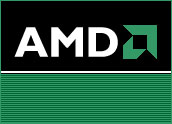
The success of ARM-based processors in mobile phones and tablets has had a tectoniceffect across numerous IT markets, but one of their most intriguing opportunities isin data centers. It seems contradictory that a CPU architecture designed for powerefficiency and lightweight applications would be considered for compute-intensiveenvironments.
However, innovations in clustering, grid, fabrics and other areas have set thestage for so-called “micro-server” solutions from newcomers including Calxeda andMarvell, and piqued the interest of major players like Dell and HP.
Until AMD’s recent announcement that it would add ARM-based solutions to its Opteronportfolio by 2014, there had been a clear delineation between ARM and the x86 siliconthat dominates volume server sales. That doesn’t mean x86 doesn’t have a place inmicro-server applications. In fact, AMD has continued pushing the energy efficiency ofits traditional Opteron CPUs.
Plus, Intel is pursuing numerous efforts around its Xeonand Atom processors, significantly improving energy performance and emphasizing thevalue of their native compatibility with existing applications and other solutions.
Huge Opportunity
So does AMD’s announcement change the market dynamic for either ARM or x86servers? No and yes. To the first point, there isn’t much of a market for ARM-basedservers today, and significant demand for these solutions seems years away. In fact,Lisa Su, SVP and GM of AMD’s global business units, said that it would take “a year ortwo” after the company’s new Opteron solutions arrive for them to achieve sustainableprofitability.
However, the nature of that market — if it evolves as AMD and its partners suggestedit would at the launch in San Francisco — could be considerable. Frankly, interest inenergy-efficient servers tends to wax and wane in broader markets, depending on the priceof electricity and the profile of “green” ecological issues.
Still, it has been a core concern among owners of massive, hyperscale data centers foryears. These companies — including Amazon, Facebook, Google, Microsoft and otherleading vendors in cloud, Web 2.0 and related services — may be a small, exclusive club,but they represent a large and potentially huge market opportunity.
Dell’s presence at the AMD launch was a significant indicator of this. The company’sData Center Solutions (DCS) group was founded five years ago to focus on hyperscalecustomers. Dell has certainly succeeded in that space, owning a commanding leadin the sector. IDC’s most recent survey of this space gave the company 45.2 percent of themarket, compared to second place HP’s 15.5 percent. In fact, Dell announced just last weekthat it sold its millionth DCS server.
Commercial Potential
Are micro-servers ever likely to become a major commercial segment? That’s harder tosay. At AMD’s ARM launch event, Red Hat was the nearest thing to a mainstream ISVsupporting the company’s effort. That wasn’t surprising, given the company’s positionamong Linux-happy megascale data center owners, but it is unclear if and how manyother ISVs will follow suit.
In the short term, ARM-based servers will largely be of interest to thehyperscale data center clients AMD is initially targeting, thus inhabiting a small yetpotentially lucrative niche. However, the situation could well change if major ISVs likeMicrosoft and SAP decide to port their solutions to ARM-based hardware.
That said, the ARM-based server narrative isn’t purely a silicon story. AMD’s purchaseof SeaMicro earlier this year offered the company a solid foot up in the micro-servercategory with the Freedom Fabric — SeaMicro’s interconnect technology that supports theclustering of hundreds or thousands of servers, as well as far more efficient usage of compute,memory and networking resources.
In fact, innovative fabrics play a role in the efforts of virtually every micro-server vendor (including Intel, which acquired high performance fabric assets from Qlogic and Craythis year). Freedom Fabric is platform-agnostic. In fact, AMD continues to sell SeaMicroservers based on Intel Atom and Xeon CPUs, and it is developing Opteron-basedsystems that leverage the technology. When the company’s new ARM chips arrive, theFreedom Fabric will be ready and waiting.
Overall, AMD’s plans for ARM-based 64-bit Opteron solutions seems to be both aworkable extension of the company’s existing technology assets and an intelligentapproach to preparing for evolving markets. The strategy isn’t without risk, since itdepends on developments that are cast in anything but stone.
However, it is necessary. Without this or similarly bold initiatives, AMD would likely beconsigned to also-ran status indefinitely. The right ARM-based solutions, properlyexercised, could provide AMD a means of competing more effectively against existingfoes in the short term and winning many battles ahead.






















































Social Media
See all Social Media